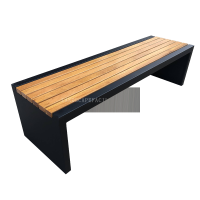Welcome to the website for landscape facilities products and knowledge.
How does the table’s design accommodate the needs of users with sensory sensitivities?
For individuals with sensory sensitivities, ordinary furniture can present significant challenges. Thoughtfully designed tables address these needs through multiple intentional features that create calming, functional environments. The selection of materials plays a crucial role in accommodating sensory differences. Tables with smooth, non-reflective surfaces prevent visual overstimulation, while rounded edges eliminate sharp corners that might cause anxiety. The incorporation of natural wood grains or matte finishes provides gentle visual texture without overwhelming the senses.
Color psychology informs another critical aspect of sensory-friendly table design. Designers often select muted, neutral color palettes featuring soft earth tones and pastels that create visual tranquility. These subdued hues help prevent the sensory overload that bright, contrasting colors might trigger in sensitive individuals. Some designs incorporate subtle color-coding systems that aid navigation without creating visual clutter.
The structural elements of these tables consider both tactile and auditory sensitivities. Stabilized legs and reinforced joints eliminate wobbling and prevent distracting noises during use. Designers often incorporate vibration-dampening materials that absorb sound and movement, creating a more predictable sensory experience. Height-adjustable mechanisms allow users to customize their interaction with the table, promoting bodily comfort and reducing physical strain.
Beyond physical attributes, sensory-conscious tables facilitate better spatial organization. Integrated storage solutions with discreet compartments help minimize visual clutter, which can be particularly overwhelming for those with sensory processing differences. Some designs feature built-in partitions or subtle boundaries that define personal space without creating feelings of confinement.
The overall aesthetic embraces minimalism while maintaining functionality. Designers eliminate unnecessary decorative elements that might distract or overstimulate, focusing instead on clean lines and purposeful forms. This approach reduces cognitive load and allows users to concentrate on their tasks without sensory interference. The result is furniture that doesn't just serve a practical purpose but actively contributes to the user's comfort and well-being.
These design considerations benefit various populations, including individuals with autism spectrum disorder, sensory processing disorder, anxiety conditions, and anyone who experiences sensory overload. By addressing the full spectrum of sensory experiences—visual, tactile, auditory, and even proprioceptive—these tables demonstrate how inclusive design creates environments where everyone can thrive. The careful attention to sensory details transforms ordinary furniture into tools that support focus, reduce stress, and promote independence in daily activities.
Related search:

Recommendation
Modern Stainless Steel Begonia Wood Park Chair Outdoor Courtyard Leisure Sun Protection Bench Long Seat